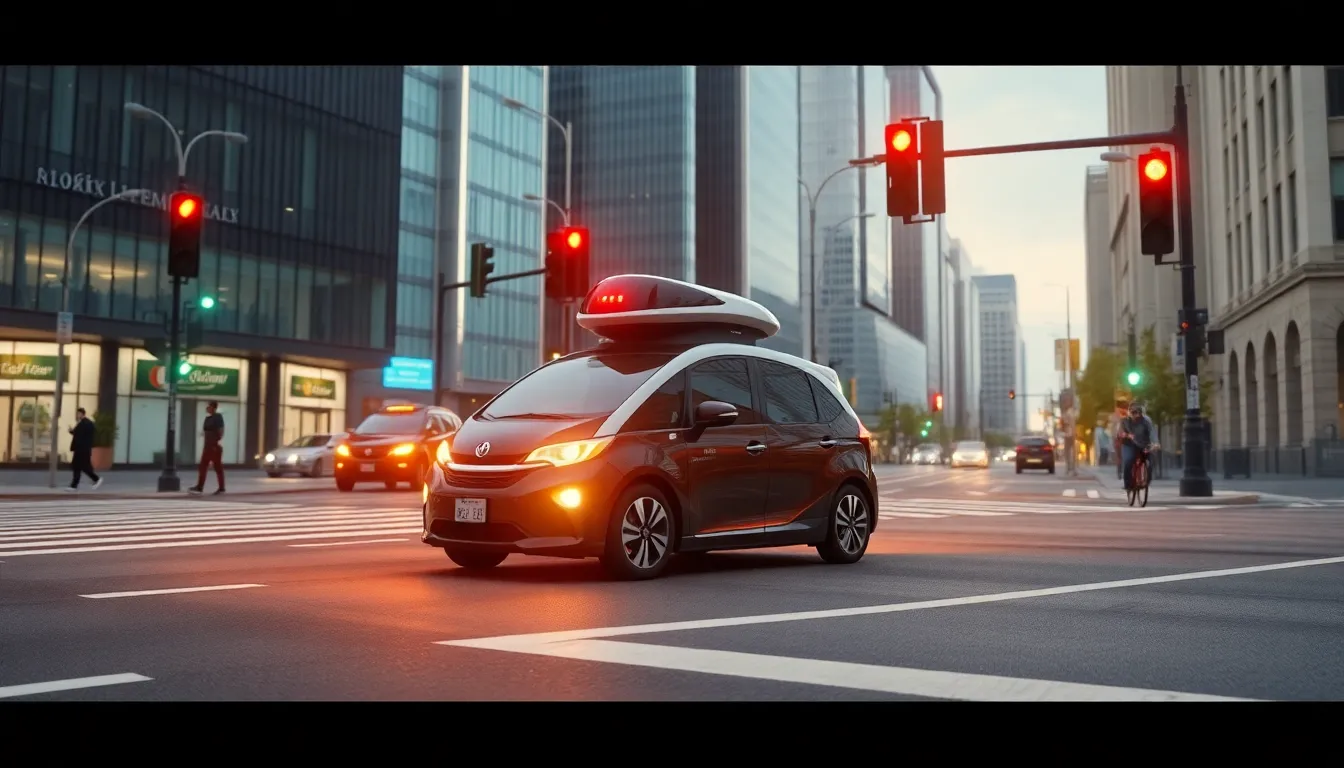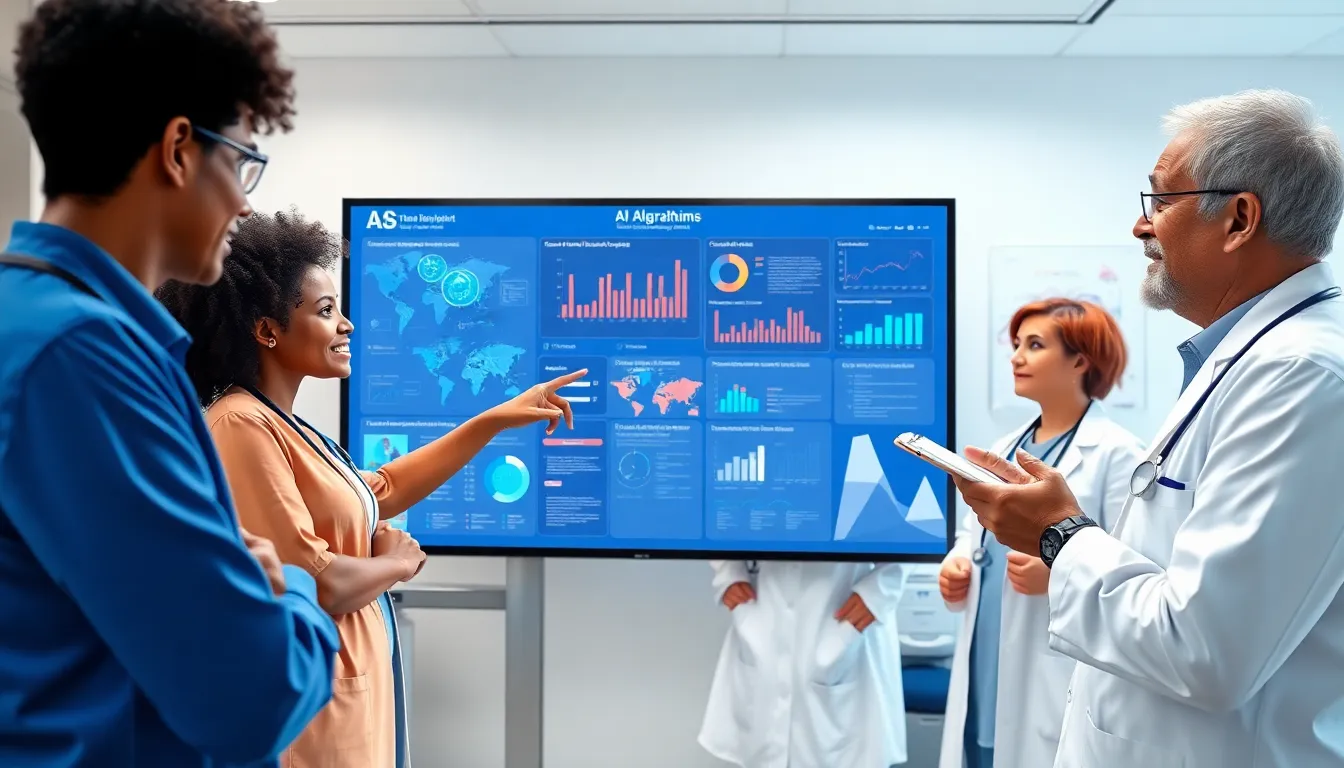In a world where traffic jams and parking woes seem to be the norm, AI-powered mobility solutions are like a breath of fresh air—or maybe a self-driving car zooming past. These cutting-edge technologies are transforming how people and goods move, making the daily grind a little less grindy. Imagine a future where your morning commute is smoother than a buttered slide.
Table of Contents
ToggleOverview of AI-Powered Mobility Solutions
AI-powered mobility solutions transform how people navigate urban environments. These systems analyze real-time data from various sources, including traffic signals, satellite imagery, and vehicle telemetry, to optimize route planning and reduce travel times. Enhanced algorithms predict traffic patterns, allowing vehicles to adapt their routes dynamically.
Integration of AI technology enables smarter public transportation options. Real-time updates on bus and train schedules help passengers make informed decisions about their travel plans. By employing machine learning, these systems improve over time, learning from historical data and user preferences.
Autonomous vehicles represent a significant advancement in mobility solutions. Equipped with sophisticated sensors and AI-driven navigation, these vehicles minimize human error, enhance safety, and improve accessibility for individuals with disabilities. The development of ride-sharing platforms with AI support also streamlines transportation options, creating efficient matches between drivers and riders.
Innovative traffic management solutions deploy AI to monitor and control traffic flows. Through adaptive traffic signals, cities can minimize congestion and enhance pedestrian safety. Enhanced data analytics also aid city planners in evaluating transportation infrastructure needs, leading to smarter urban development.
The impact of AI-powered mobility solutions extends beyond personal convenience. By reducing congestion and promoting efficient route choices, these technologies contribute to lower greenhouse gas emissions. As cities embrace these innovations, they lay the groundwork for a more sustainable, interconnected transportation future.
Key Technologies Behind AI-Powered Mobility

AI-powered mobility solutions rely on several key technologies to maximize efficiency and enhance user experience. Understanding these technologies reveals their potential impact on modern transportation.
Machine Learning Algorithms
Machine learning algorithms analyze vast quantities of data, allowing systems to learn from patterns and improve decision-making. They process historical traffic data and user behavior to optimize route planning and minimize delays. These algorithms adapt to changes, such as accidents or construction, providing real-time adjustments. Companies like Waymo and Tesla use machine learning for autonomous vehicles, enhancing safety features and predictive capabilities. Additionally, the algorithms contribute to more personalized transportation options based on user preferences.
Sensor Integration
Sensor integration plays a critical role in AI-powered mobility by providing real-time data. Sensors collect information from vehicles, infrastructures, and users to create a comprehensive environment overview. Technologies like Lidar, cameras, and GPS systems enable vehicles to detect obstacles and assess conditions accurately. These sensors interact with machine learning algorithms, facilitating improved navigation and safety. Intelligent traffic management systems use sensor data to optimize signal timings, reducing congestion and enhancing pedestrian safety in urban areas.
Benefits of AI-Powered Mobility Solutions
AI-powered mobility solutions offer significant advantages in transportation, particularly in safety and efficiency. These technologies reshape urban environments, providing solutions that address contemporary challenges.
Enhanced Safety
Autonomous vehicles utilize advanced sensor integration to enhance safety. Lidar, cameras, and GPS systems work together to create a comprehensive view of surroundings. Real-time data analysis enables prompt responses to potential hazards. Traffic management systems optimize signal timings and reduce accidents by facilitating smoother traffic flow. Machine learning algorithms continuously refine safety features, adapting to evolving situations. Data shows that incorporating AI can lead to a substantial decrease in collision rates. Enhanced safety features increase public trust in these new technologies, fostering greater acceptance of autonomous vehicles in everyday life.
Improved Efficiency
AI technologies streamline traffic management processes. By analyzing vast amounts of data, real-time decision-making optimizes route planning, significantly reducing travel times. Public transportation systems benefit from instant updates, helping commuters make informed choices. Smart traffic signals adjust based on traffic patterns to minimize waiting times. Autonomous vehicles communicate with each other to coordinate movements, further enhancing overall efficiency. Research indicates that urban areas employing these solutions can experience up to a 30 percent reduction in travel delays. Efficient mobility solutions contribute to better resource allocation, promoting sustainability within transportation networks.
Challenges and Considerations
AI-powered mobility solutions bring several challenges that require careful consideration. Addressing these issues is essential for ensuring a smooth transition towards smarter transportation systems.
Data Privacy Concerns
Data privacy remains a significant concern in the implementation of AI mobility solutions. Collecting real-time information about user movements raises questions about consent and data protection. Users often worry about how their data is stored and used by service providers. Regulations like GDPR aim to safeguard user data but can complicate the deployment of AI systems. Organizations must prioritize transparency to build trust with users, allowing them to understand how data is leveraged for improved mobility experiences. Mitigating these privacy concerns includes adhering to ethical standards and utilizing secure data handling practices.
Infrastructure Limitations
Infrastructure limitations pose considerable challenges to the integration of AI in mobility systems. Many cities lack the necessary technological infrastructure to support advanced AI solutions. Inadequate road conditions and outdated traffic management systems hinder the effective deployment of AI technologies. Investment in upgrades for roadways, traffic signals, and communication networks is crucial for success. Cities must explore public-private partnerships to fund these enhancements. Building a solid foundation ensures seamless integration of AI capabilities, fostering safer and more efficient transportation networks.
Future Trends in AI-Powered Mobility Solutions
Emerging trends indicate continued growth in AI-powered mobility solutions, especially in urban areas. Autonomous vehicle technology is advancing rapidly, leading to the development of safer, more efficient transportation options. Many companies focus on creating AI that learns from real-world driving patterns, refining performance over time.
In addition to autonomous vehicles, AI-driven demand-responsive transit systems are gaining traction. These systems enhance public transportation by adjusting routes based on user needs, effectively reducing wait times. Real-time data analysis in transit networks helps optimize schedules and increase reliability, making public transport a more attractive option.
Smart traffic management is also evolving. Current systems leverage AI to analyze traffic patterns, reducing congestion significantly. Studies show urban areas implementing AI traffic control can achieve up to a 30 percent reduction in travel delays. Predictive analytics is integral to these systems, allowing for proactive traffic signal adjustments that improve flow and safety for both vehicles and pedestrians.
AI integration with vehicles and infrastructure paves the way for vehicle-to-everything (V2X) communications. V2X technology enables vehicles to communicate with traffic signals and other road users, enhancing safety and reducing accidents. Implementing this technology requires investment in smart infrastructure to support seamless communication.
Public interest in sustainability drives further innovation in AI-powered mobility solutions. As cities prioritize green initiatives, AI technologies contribute to reducing greenhouse gas emissions. Adoption of electric autonomous vehicles plays a crucial role, fostering an eco-friendly transportation landscape.
Awareness of data privacy also shapes future developments. Companies must address concerns related to user data collection by adopting transparent policies and ethical standards. The balance between innovation and trust will determine the pace of widespread acceptance and implementation.
AI-powered mobility solutions are set to redefine transportation as we know it. By enhancing efficiency and safety these technologies promise a more sustainable future for urban commuting. The integration of real-time data and advanced algorithms not only improves navigation but also fosters public trust through increased safety measures.
While challenges like data privacy and infrastructure upgrades remain, the ongoing advancements in AI and autonomous vehicles indicate a strong commitment to overcoming these hurdles. As cities adapt to these innovations the potential for reduced congestion and lower emissions becomes increasingly tangible. The journey toward smarter transportation systems is just beginning and its impact will resonate for years to come.





